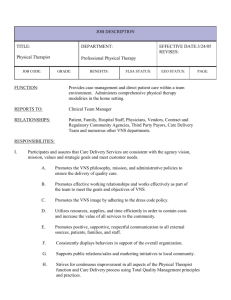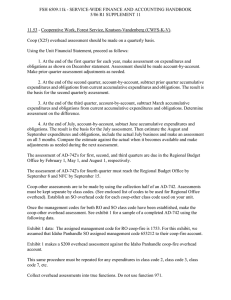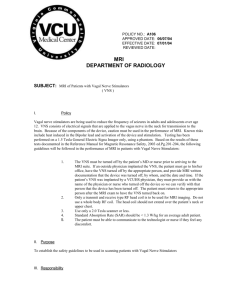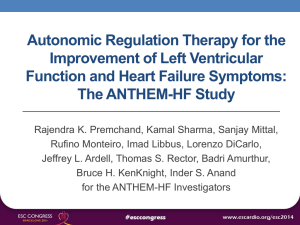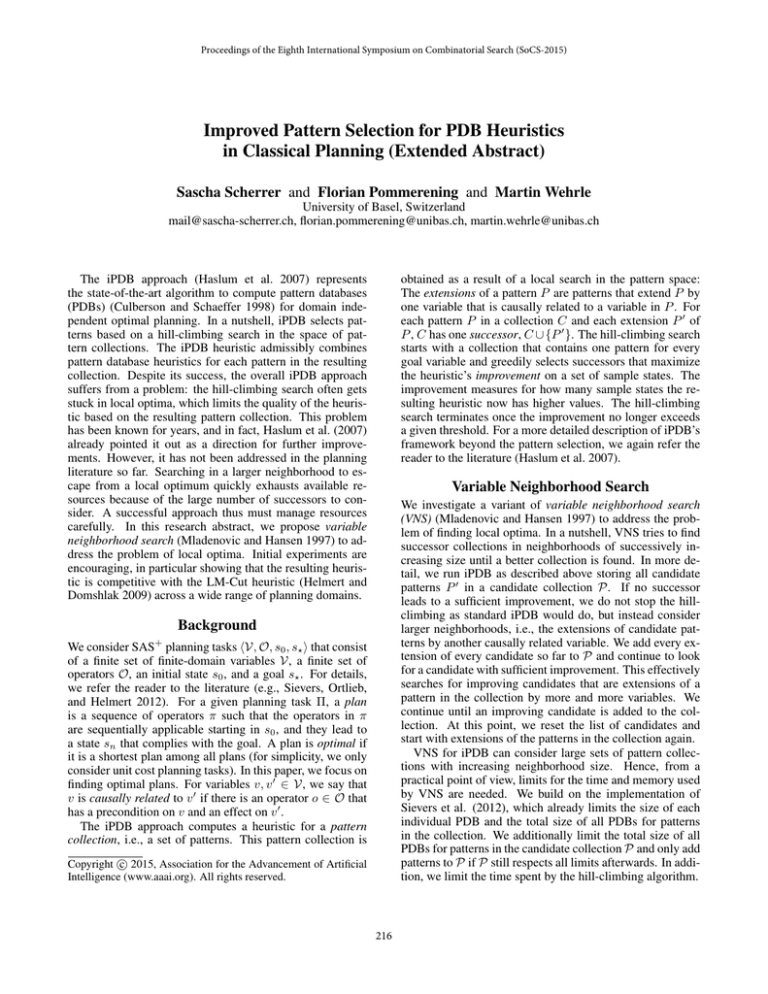
Proceedings of the Eighth International Symposium on Combinatorial Search (SoCS-2015)
Improved Pattern Selection for PDB Heuristics
in Classical Planning (Extended Abstract)
Sascha Scherrer and Florian Pommerening and Martin Wehrle
University of Basel, Switzerland
mail@sascha-scherrer.ch, florian.pommerening@unibas.ch, martin.wehrle@unibas.ch
The iPDB approach (Haslum et al. 2007) represents
the state-of-the-art algorithm to compute pattern databases
(PDBs) (Culberson and Schaeffer 1998) for domain independent optimal planning. In a nutshell, iPDB selects patterns based on a hill-climbing search in the space of pattern collections. The iPDB heuristic admissibly combines
pattern database heuristics for each pattern in the resulting
collection. Despite its success, the overall iPDB approach
suffers from a problem: the hill-climbing search often gets
stuck in local optima, which limits the quality of the heuristic based on the resulting pattern collection. This problem
has been known for years, and in fact, Haslum et al. (2007)
already pointed it out as a direction for further improvements. However, it has not been addressed in the planning
literature so far. Searching in a larger neighborhood to escape from a local optimum quickly exhausts available resources because of the large number of successors to consider. A successful approach thus must manage resources
carefully. In this research abstract, we propose variable
neighborhood search (Mladenovic and Hansen 1997) to address the problem of local optima. Initial experiments are
encouraging, in particular showing that the resulting heuristic is competitive with the LM-Cut heuristic (Helmert and
Domshlak 2009) across a wide range of planning domains.
obtained as a result of a local search in the pattern space:
The extensions of a pattern P are patterns that extend P by
one variable that is causally related to a variable in P . For
each pattern P in a collection C and each extension P 0 of
P , C has one successor, C ∪ {P 0 }. The hill-climbing search
starts with a collection that contains one pattern for every
goal variable and greedily selects successors that maximize
the heuristic’s improvement on a set of sample states. The
improvement measures for how many sample states the resulting heuristic now has higher values. The hill-climbing
search terminates once the improvement no longer exceeds
a given threshold. For a more detailed description of iPDB’s
framework beyond the pattern selection, we again refer the
reader to the literature (Haslum et al. 2007).
Variable Neighborhood Search
We investigate a variant of variable neighborhood search
(VNS) (Mladenovic and Hansen 1997) to address the problem of finding local optima. In a nutshell, VNS tries to find
successor collections in neighborhoods of successively increasing size until a better collection is found. In more detail, we run iPDB as described above storing all candidate
patterns P 0 in a candidate collection P. If no successor
leads to a sufficient improvement, we do not stop the hillclimbing as standard iPDB would do, but instead consider
larger neighborhoods, i.e., the extensions of candidate patterns by another causally related variable. We add every extension of every candidate so far to P and continue to look
for a candidate with sufficient improvement. This effectively
searches for improving candidates that are extensions of a
pattern in the collection by more and more variables. We
continue until an improving candidate is added to the collection. At this point, we reset the list of candidates and
start with extensions of the patterns in the collection again.
VNS for iPDB can consider large sets of pattern collections with increasing neighborhood size. Hence, from a
practical point of view, limits for the time and memory used
by VNS are needed. We build on the implementation of
Sievers et al. (2012), which already limits the size of each
individual PDB and the total size of all PDBs for patterns
in the collection. We additionally limit the total size of all
PDBs for patterns in the candidate collection P and only add
patterns to P if P still respects all limits afterwards. In addition, we limit the time spent by the hill-climbing algorithm.
Background
+
We consider SAS planning tasks hV, O, s0 , s? i that consist
of a finite set of finite-domain variables V, a finite set of
operators O, an initial state s0 , and a goal s? . For details,
we refer the reader to the literature (e.g., Sievers, Ortlieb,
and Helmert 2012). For a given planning task Π, a plan
is a sequence of operators π such that the operators in π
are sequentially applicable starting in s0 , and they lead to
a state sn that complies with the goal. A plan is optimal if
it is a shortest plan among all plans (for simplicity, we only
consider unit cost planning tasks). In this paper, we focus on
finding optimal plans. For variables v, v 0 ∈ V, we say that
v is causally related to v 0 if there is an operator o ∈ O that
has a precondition on v and an effect on v 0 .
The iPDB approach computes a heuristic for a pattern
collection, i.e., a set of patterns. This pattern collection is
c 2015, Association for the Advancement of Artificial
Copyright Intelligence (www.aaai.org). All rights reserved.
216
104
103
102
101
100
1
2
3
4
5
6
7
10 10 10 10 10 10 10 10
hiPDB-VNS
900s,400M
Sum (502)
Sum in other domains (894)
uns.
0
Total sum (1396)
Coverage score (in %)
Figure 1: Expansions of A∗ (without the last f layer to ignore tie-breaking issues) using iPDB with and without VNS.
hLM-Cut
Airport (50)
Depot (22)
Elevators (50)
Floortile (20)
Miconic (150)
Parcprinter (50)
TPP (30)
Transport (50)
Trucks (30)
Woodworking (50)
105
hiPDB-VNS
900s,400M
hiPDB
900s,400M
106
hiPDB
900s,400M
107
hiPDB
∞,∞
unsolved
25
8
36
2
55
22
6
17
8
13
38
8
36
2
55
28
6
17
8
23
38
11
43
4
55
28
8
24
10
23
28
7
40
7
141
31
7
17
10
29
192
474
221
473
244
481
317
452
666
50.72
694
52.68
725
55.45
769
53.60
Table 1: Coverage for different variants of iPDB and LMCut. Subscripts for iPDB heuristics show time and memory
limits. Per-domain results are shown for Miconic, and where
iPDB-VNS
coverage for hiPDB
∞,∞ and h900s,400M differs by more than one.
Evaluation
We have implemented VNS on top of the iPDB implementation (Sievers, Ortlieb, and Helmert 2012) in the Fast Downward planner (Helmert 2006). We evaluated our approach
for optimal planning with A∗ on the IPC 1998–2011 benchmarks. Our experiments were performed on machines with
Intel Xeon E5-2660 CPUs running at 2.2 GHz, with a global
time limit of 30 minutes and a memory bound of 2 GB per
run. We left the memory limits for the number of abstract
states per PDB and for the collection at their defaults (2 million and 20 million, respectively). For VNS, we additionally
limit hill-climbing time to 900 s and memory usage of the
candidate collection to 400 million abstract states (≈ 80% of
the available memory). Limiting hill-climbing time to 450 s
and 1350 s yields similar results as for 900 s. Without limiting hill-climbing time, iPDB exceeds the global time limit
in 281 cases before starting the A∗ search. Considering the
memory limit, due to over-allocation and overhead of other
data structures, we cannot use all memory to store PDBs.
Experiments with 40% and 20% of the available memory
solve 3–5 fewer tasks in total.
Figure 1 shows that VNS can further improve iPDB’s
quality. This improvement highlights that the original iPDB
procedure indeed often gets stuck, and it shows that VNS is a
way around this problem. In addition, the per-domain results
in Table 1 show that this variant is on par with the LM-Cut
heuristic (better in 21 out of 44 domains, worse in 14). Although the number of solved tasks (the coverage) of LM-Cut
is higher, we observe that this is primarily due to one domain
(Miconic), where LM-Cut solves 86 tasks more than VNS.
In contrast, the fraction of solved tasks by domain, averaged
over all domains (the coverage score) normalizes the coverage over the number of tasks by domain and is more robust
to differences in domains with many tasks. For VNS, this
score is about two percentage points higher than that of LMCut, which is a considerable improvement.
Conclusions
Our initial evaluation of VNS for iPDB is encouraging,
showing significant improvements compared to basic iPDB,
and competitive results with LM-Cut. In the future, it will be
interesting to investigate more informed neighborhood extension algorithms, for example, preferring promising patterns depending on the problem structure.
Acknowledgments
This work was supported by the Swiss National Science
Foundation as part of the project “Abstraction Heuristics for
Planning and Combinatorial Search (AHPACS)”.
References
Culberson, J. C., and Schaeffer, J. 1998. Pattern databases.
Computational Intelligence 14(3):318–334.
Haslum, P.; Botea, A.; Helmert, M.; Bonet, B.; and Koenig,
S. 2007. Domain-independent construction of pattern
database heuristics for cost-optimal planning. In Proc. AAAI
2007, 1007–1012.
Helmert, M., and Domshlak, C. 2009. Landmarks, critical
paths and abstractions: What’s the difference anyway? In
Proc. ICAPS 2009, 162–169.
Helmert, M. 2006. The Fast Downward planning system.
Journal of Artificial Intelligence Research 26:191–246.
Mladenovic, N., and Hansen, P. 1997. Variable neighborhood search.
Computers & Operations Research
24(11):1097–1100.
Sievers, S.; Ortlieb, M.; and Helmert, M. 2012. Efficient
implementation of pattern database heuristics for classical
planning. In Proc. SoCS 2012, 105–111.
217


